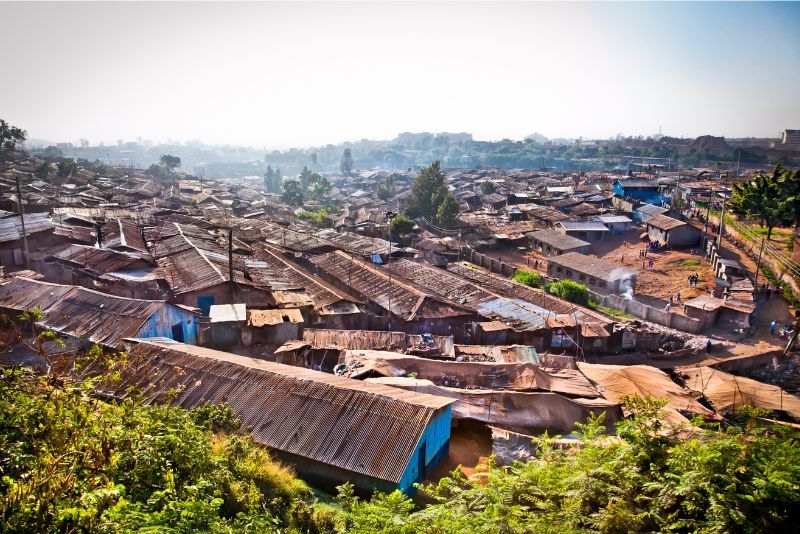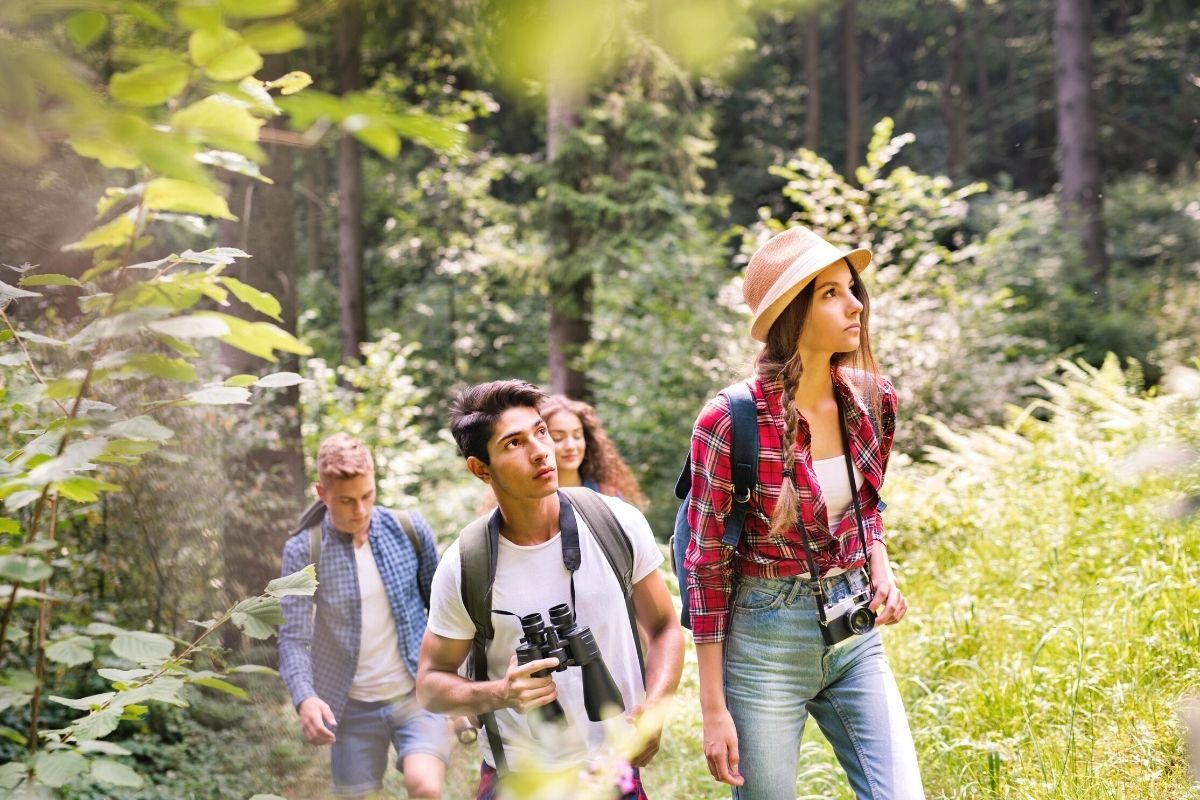Free Walking Tours in Nairobi
The capital of Kenya, Nairobi is fondly known as the “Green City in the Sun” because of its natural environment. Alongside its meandering rivers, surrounding forests and savannahs, the city is home to myriad breathtaking attractions and landmarks, which provide insight into East African culture and history.
Free walking tours in Nairobi are the perfect way to get acquainted with the city and are a popular choice among travelers of any age.
The capital of Kenya, Nairobi is fondly known as the “Green City in the Sun” because of its natural environment. Alongside its meandering rivers, surrounding forests and savannahs, the city is home to myriad breathtaking attractions and landmarks, which provide insight into East African culture and history.
Free walking tours in Nairobi are the perfect way to get acquainted with the city and are a popular choice among travelers of any age.

(0/24) checking Musement...
The capital of Kenya, Nairobi is fondly known as the “Green City in the Sun” because of its natural environment. Alongside its meandering rivers, surrounding forests and savannahs, the city is home to myriad breathtaking attractions and landmarks, which provide insight into East African culture and history.
Free walking tours in Nairobi are the perfect way to get acquainted with the city and are a popular choice among travelers of any age.

Here's all you need to know about free walking tours, one of the most engaging sightseeing tours in Nairobi.
How do free walking tours work?
Free walking tours in Nairobi have become increasingly popular in recent years as they provide tourists with an affordable and authentic way of experiencing this incredible city.
In comparison to walking tours in Nairobi, these tours are completely free to book and participate in, but it is encouraged that you tip your tour guide at the end of the tour. The amount you decide to tip is completely up to you.
How much should you tip?
When deciding how much to tip, think about the effort that your guide put into the tour and how much you enjoyed the tour overall.
Most tour participants tend to tip between US$10 and US$15 per person, but some people tip as much as US$50 for outstanding tours.
What are the best free walking tours in Nairobi?
Free walking tour in Nairobi

You’ll begin your free walking tour in Nairobi in the center of the city, where you’ll get acquainted with your guide and head to your first destination — the Kenya National Archives & Documentation Service. From there, you’ll head to the Parliament Buildings, which were built in the middle of the 20th century, just under a decade before the country gained independence from colonial rule.
You’ll wander through the city, learning about the lifestyle of its residents and the politics that affect them, passing by landmarks such as Kencom House and August 7th Memorial Park. This park pays respect to the innocent civilians who were injured or lost their lives in the infamous car bombing of 1998. You’ll also see the Office of the President where some of the country’s most important decisions are made, as well as the Office of the Deputy President.
The Holy Family Basilica, which was established in 1904, is another highlight of this free tour, as well as the Galton-Fenzi Memorial, which honors Lionel Douglas Galton-Fenzi — the founder of Nairobi’s branch of the Royal East Africa Automobile Association and the first individual to drive between Nairobi and Mombasa.
Admire the unique architecture of the Kenyatta International Convention Centre before continuing along, passing several more political landmarks. You’ll also see Jamia Mosque, which is a significant place of worship for the 11% of the city’s population that identifies as Muslim.
Among the final spots on this tour are the McMillan Memorial Library, which is built in a Neoclassical style and is the city’s oldest library, and the City Market, which is popular among tourists for its handmade craft section that includes beadwork and wooden carvings.
Free Kibera Slum walking tour in Nairobi

This free walking tour in Nairobi will open your eyes as it takes you on a journey through one of the world’s largest slums — Kibera. The number of residents in this 2.5-square-kilometer stretch is greatly contested, with some estimating 170,000, while others believe it to be over a million. You’ll be guided by a local who grew up in the slum and can show you the culture behind the neighborhood’s impoverished veil.
You’ll discover how the area’s inhabitants get by with as little as US$2 per day, as well as their daily lifestyle. Alongside learning about life here, you’ll also see some of the region’s major landmarks, which include the Magic Field and the Golf Coast. Prepare to have your preconceptions about this community turned upside down throughout the duration of this tour as you see smiling faces and friendly waves in what could be considered an area of misery and despair.
Your passionate guide will also talk you through the work that is being undertaken to improve the state of the slum and the future of its youngest members.
Gastronomic free walking tour in Nairobi
Alternatively, discover the Kenyan capital through another of your senses — your taste buds — on this food tour of Nairobi. On this type of excursion, you’ll be paired with a local foodie who knows all the best hangouts for those with an adventurous palette.
You’ll hop between a range of food vendors, from restaurants to market stalls, in order to try the most exquisite delicacies in Nairobi and expand your understanding of Kenyan food. Among the dishes you may try are ugali — a type of cornmeal that is served alongside most meals — as well as githeri, which is made using maize and beans. Another of the dishes you must try while on this free tour in Nairobi is nyama choma — succulent goat meat that is grilled fresh and melts in your mouth.
See how Nairobi is influenced by a fusion of cultures by trying the city’s own take on the humble samosa — a savory snack that originated in India and is usually filled with potatoes, and vegetables. Here, you can try these with the addition of beef for a Kenyan twist on an Asian favorite. Pull apart steaming breads as you sample chapati, the roots of which are highly debated, with some claiming it was first created in India, while others argue that it originated in East Africa.
Brave eaters can also try mutura — a blood sausage made from the intestines of cows, goats and/or lambs. It’s worth noting that while this food tour in Nairobi is free to participate in, you’ll be required to purchase the culinary samples at each establishment.
By the time you finish this excursion, you’ll feel as though you’ve gained a thorough introduction into Kenyan cuisine and its roots, enabling you to determine which dishes you do, and don’t like, to shape your eating habits for the rest of your vacation.
Nature and wildlife tour in Nairobi

Step away from the city’s skyscrapers to discover its green roots on this nature tour of Nairobi. You’ll head to the outskirts of the city where Karura Forest covers over 1,000 hectares of Kenyan wilderness and amble through a number of its natural landmarks.
These include a plethora of tumbling falls and fascinating caves that were used as hideout spots during the Mau Mau Rebellion of the 20th century. Another of this area’s highlights is its spectacular array of wildlife, which includes bushbucks, civets, porcupines and Sykes' monkeys. Looking up to the skies, you may be lucky enough to spot several of the forest’s 200 bird species, which include the green-backed camaroptera and singing cisticola bird.
Adventure seekers can stroll along the canopy walk to gain panoramic views across the dense forest.
In which languages is it operated?
The variety of languages on offer for free walking tours in Nairobi is impressive in comparison with other cities. English is the primary language these excursions operate in, which is convenient for a number of national and international visitors.
You’ll also find that most tours offer a number of European languages, such as Spanish, French, German, Italian and Dutch, as well as Mandarin, which opens them up to even more international guests.
You’ll find that different languages are offered at different time slots throughout the day, meaning you’ll simply select the one that is suitable for you at a predetermined time. This allows you to enjoy your experience in one language, rather than listening to a dual-lingual commentary, as well as connect with other like-minded travelers who you can converse with easily.
Where does it start?
Free walking tours in Nairobi begin in a number of destinations across the city, depending on the attractions you’ll be exploring. These include obvious landmarks, such as schools, as well as specific addresses, which can be on the booking page of each excursion so that you can plan your route and arrange any necessary transportation in advance.
How long does it last?
Typically, free tours in Nairobi last between 2 and 3 hours. The city is the largest in Kenya and as such, you shouldn’t expect to see everything it has to offer in such a short space of time.
However, you can explore several of its highlights, which include political monuments, the Kibera Slum and Nairobi’s surrounding forest on a tour that suits your personal interests.
Is it wheelchair friendly?
Some free walking tours in Nairobi are wheelchair-friendly while others are not. Each excursion sets its own limitations and you should consult the booking page of your selected one to see whether it is suitable for all members of your party. If not, those with limited mobility can choose from a wide range of other tours and outdoor activities in Nairobi.
When is the best time to join a free walking tour in Nairobi?
The best time for a free walking tour in Nairobi is between July and October. This is typically the dry season, and temperatures are cooler, making it ideal for walking tours.
Regardless of the season, planning your walking tour early in the morning or later in the afternoon is recommended to avoid the midday sun and heat.
Should you book tickets online?
Booking free walking tours in Nairobi online ensures your spot, as they are popular and get booked up very quickly. These tours also have limited spots available to ensure the quality of the tour — with some maximum capacities being limited to as few as 10 people.
Reserving your spot on a tour is completely free and can be done with a few simple clicks through the online booking platform. Arrive in Nairobi with your tour already booked and make the most out of your time.
